There is no better machines on the market than the DP5-FT and TG-FT series to produce superior draw textured yarns (DTY). Their optimized yarn path allows better yarn quality at higher production speeds. They make the difference.
False-Twist Texturing Machines
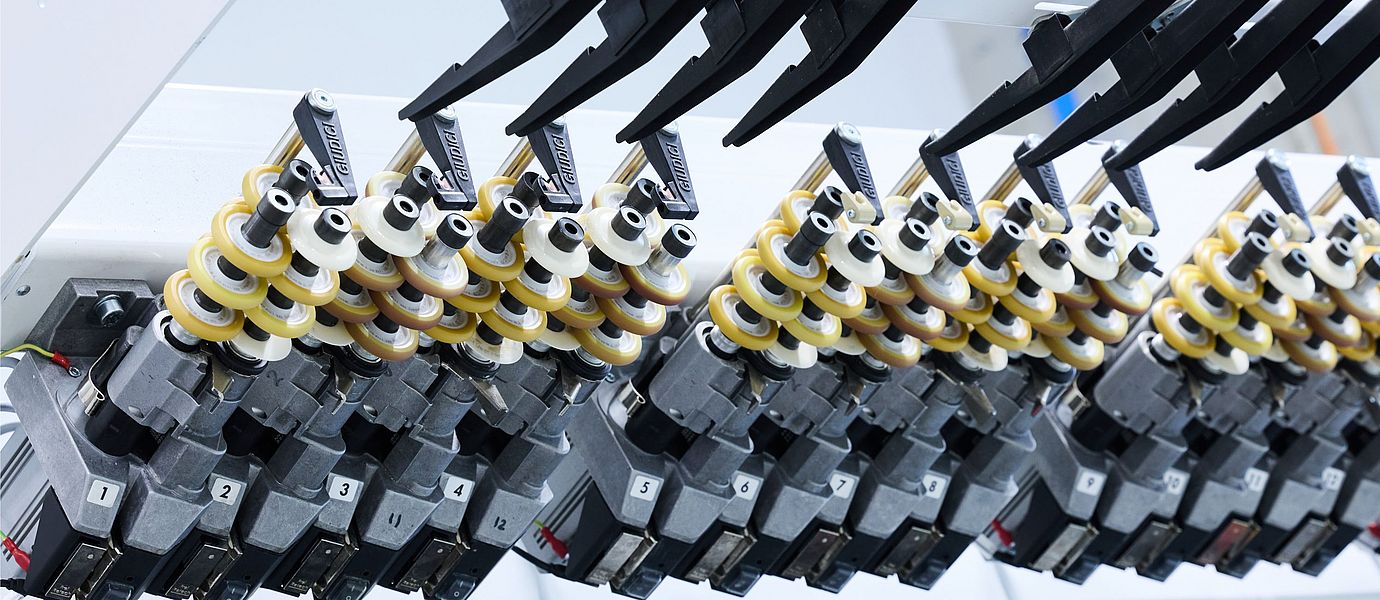
DP5-FT automatic false-twist texturing machine
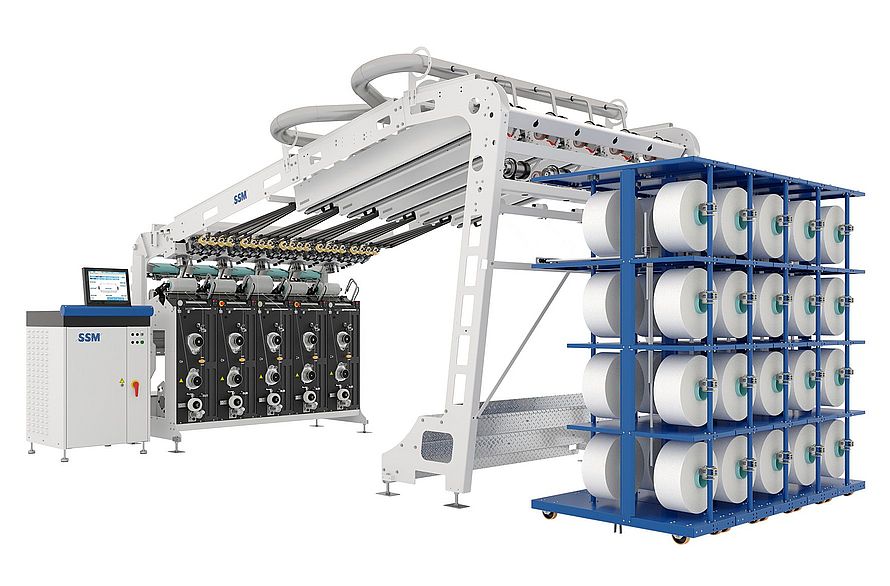
The DP5-FT false-twist texturing machine was developed for a wide final count range (7 to 1,320 dtex). Thanks to the single-position drive, up to four friction spindles per position and a variable yarn path, the productivity very high, but also offers great flexibility. The modular machine concept allows adaptions to changing requirements.
Technical data
| DP5-FT automatic false-twist texturing machine | |
|---|---|
| Type of winding | DIGICONE, Precision |
| Mechanical speed | up to 1 500 m/min |
| Drive | individually controlled single drives |
| Yarn laying | fastflex electronic yarn laying system |
| Tubes/Package shape | cylindrical tubes freely programmable up to ⌀ 300 mm |
| Traverse length | 100 – 270 mm electronically adjustable |
| Yarns | PA, PP, PES; PBT/POY |
| Yarn count | 7 – 1 320 dtex |
| Number of spindles min./max. | 5/40 (single sided) |
| Supply packages | Rotary creel: 2 or 4 ends + reserve Trolley creel: 4 ends + reserve 290 mm tube length: up to ⌀ 400 mm 150 mm tube length: up to ⌀ 450 mm |
Downloads
TG2-FT automatic false-twist texturing machine
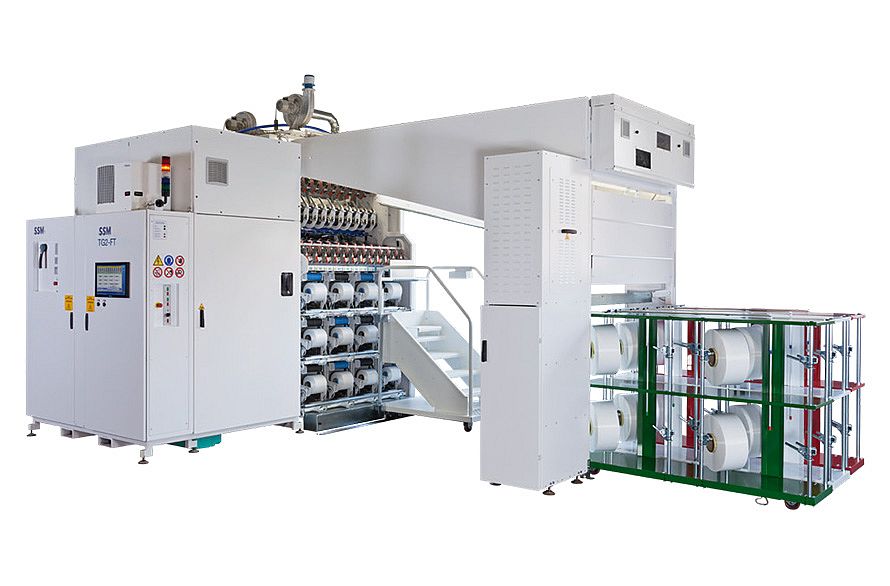
The TG2-FT automatic false-twist texturing machine has an individual, frontal doffing system per position which enables a double-sided machine layout. Designed for the cost-efficient processing of high-quality PA, PP and PES filament yarns in the fine to medium final count range (7 to 330 dtex), the TG2-FT fulfils all requirements.
Technical data
| TG2-FT automatic false-twist texturing machine | |
|---|---|
| Type of winding | random |
| Mechanical speed | up to 1 100 m/min |
| Drive | individually controlled line shafts |
| Tubes/package shape | cylindrical or bi-conical, up to ⌀ 240 mm |
| Traverse length | 190 or 245 mm |
| Yarns | PA, PP, PES; POY |
| Yarn count | 7 – 330 dtex |
| Layout | double sided |
| Number of spindles min./max. | 24/288 |
| Supply package (on trolley creel) | 1 end and stand-by per position: 250 mm tube length: up to ⌀ 450 mm 150 mm tube length: up to ⌀ 450 mm |
Downloads
TG1-FT manual false-twist texturing machine
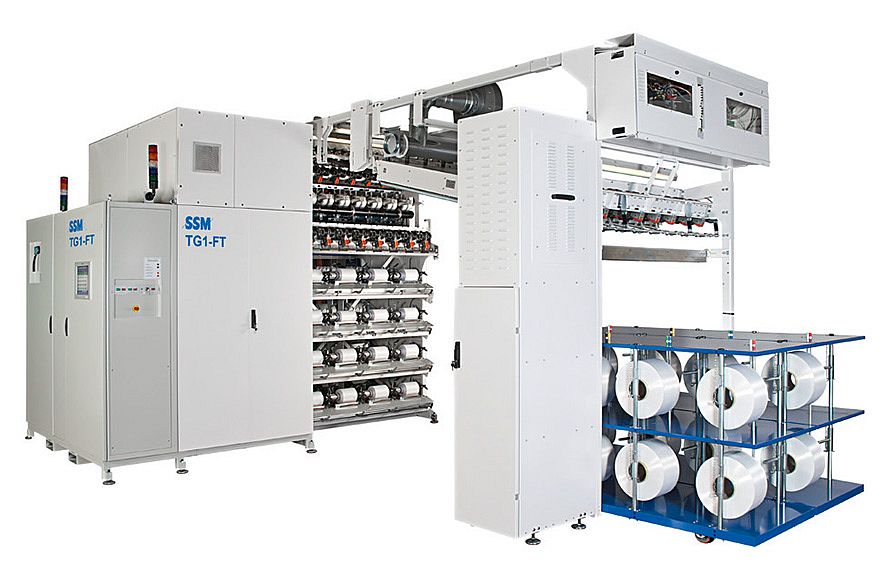
The manual TG1-FT false-twist texturing machine combines a proven texturing path along with a space saving machine design. The result is a machine for the cost efficient production of high quality polyamide (down to 7 dtex), polypropylene as well as fine count polyester yarns with or without elastane.
Technical data
| TG1-FT manual false-twist texturing machine | |
|---|---|
| Type of winding | random |
| Mechanical speed | up to 1 100 m/min |
| Drive | individually controlled line shafts |
| Tubes/Package shape | cylindrical or bi-conical, up to ⌀ 220 mm |
| Traverse length | 190 or 245 mm |
| Yarns | PA, PP, fine count PES, EL/POY |
| Yarn count | 7 – 330 dtex |
| Layout | double sided |
| Number of spindles min./max. | 32/384 |
| Supply package (on trolley creel) | 1 end and stand-by per position: 250 mm tube length: up to ⌀ 450 mm 150 mm tube length: up to ⌀ 450 mm |
Downloads
TG.30 A automatic false-twist texturing machine
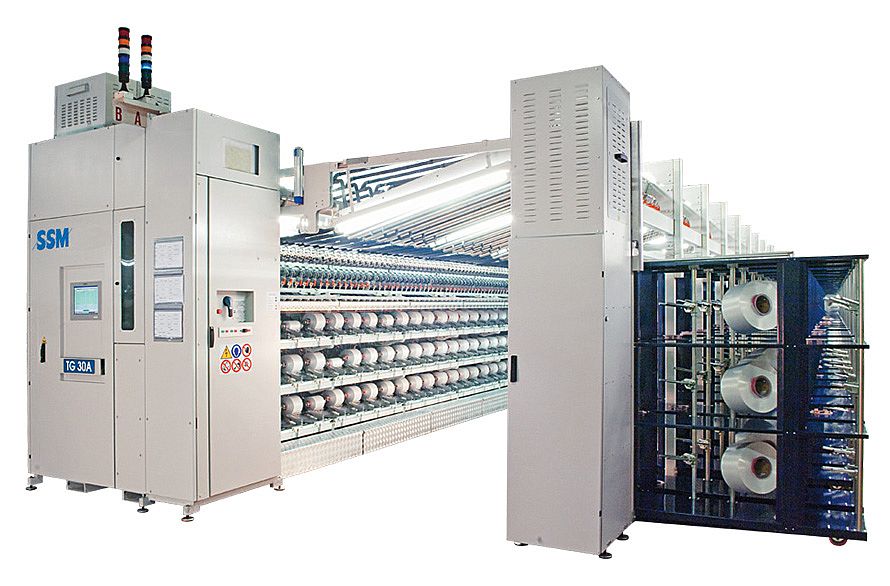
The TG.30 A automatic false-twist texturing machine has been especially developed for the economic production of fine polyamide and polypropylene yarns.
Technical data
| TG.30 A automatic false-twist texturing machine | |
|---|---|
| Type of winding | random |
| Mechanical speed | up to 1 100 m/min |
| Drive | individually controlled line shafts |
| Tubes/Package shape | cylindrical or bi-conical, up to ⌀ 250 mm |
| Traverse length | 190 or 245 mm |
| Yarns | PA, PP/POY |
| Yarn count | 7 – 330 dtex |
| Number of spindles min./max. | 12/168 (single sided) |
| Supply package (on trolley creel) | 1 end and stand-by per position: 290 mm tube length: up to ⌀ 400 mm 150 mm tube length: up to ⌀ 450 mm |
Downloads
TG.30 AEM automatic false-twist texturing and air covering machine
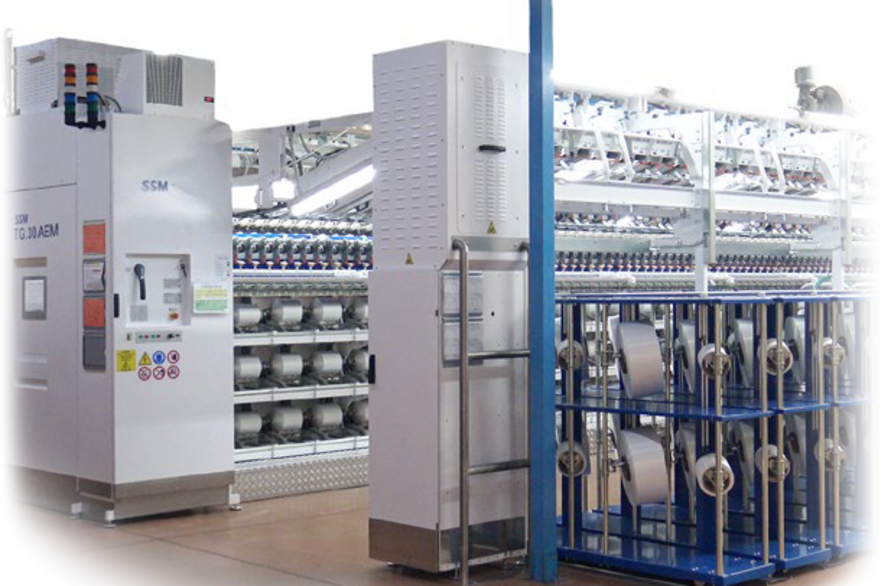
The TG.30 AEM is especially designed for false twist texturing of fine and medium count polymid (PA) and polypropylene (PP) filament yarns. In combination with the integrated elastane feeding device air covered yarns can be directly produced in one process step.
Technical data
| TG.30 AEM autoMATIc false-twist & air covering | |
|---|---|
| Type of winding | random |
| Mechanical speed | up to 1 100 m/min |
| Drive | individually controlled line shafts |
| Tubes/Package shape | cylindrical or bi-conical, up to ⌀ 250 mm |
| Traverse length | 190 or 245 mm |
| Yarns | PA, PP, EL/POY |
| Yarn count | 7 – 330 dtex |
| Number of spindles min./max. | 12/168 (single sided) |
| Supply package (on trolley creel) | up to 1 end and stand-by per position: 290 mm tube length: up to ⌀ 400 mm 150 mm tube length: up to ⌀ 450 mm |
Downloads
TG.30 2BA automatic double density false-twist texturing machine
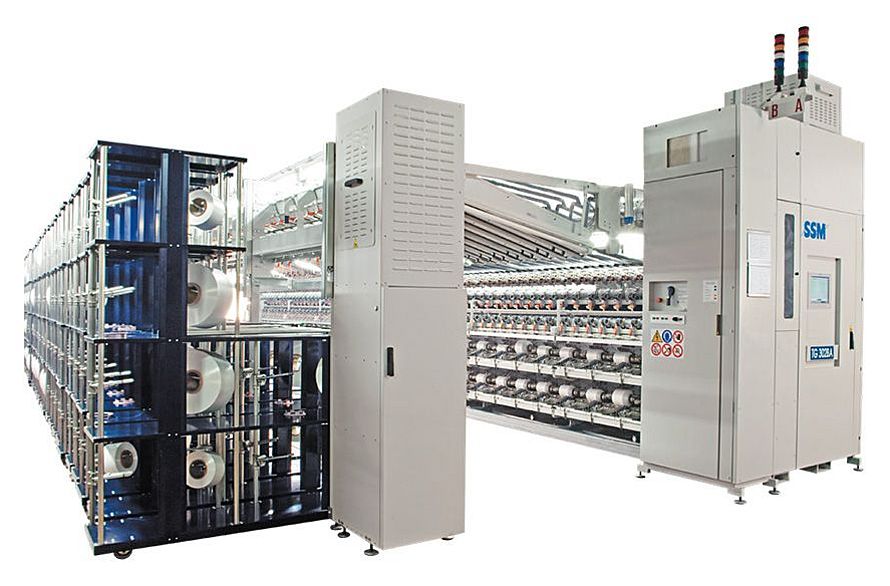
The TG.30 2BA false-twist texturing machine with automatic doffer was developed for the production of twist-free S+Z yarns (double density). The short and straight yarn path in the texturing zone is a key feature of the TG.30 2BA, which enables the false-twist texturing of high-quality yarns in the fine to medium final count range.
Technical data
| TG.30 2BA automatic false-twist texturing | |
|---|---|
| Type of winding | random |
| Mechanical speed | up to 1 100 m/min |
| Drive | individually controlled line shafts |
| Tubes/Package shape | cylindrical or bi-conical, up to ⌀ 250 mm |
| Traverse length | 190 or 245 mm |
| Yarns | PA, PP, PBT (TG30 2BA)/POY |
| Yarn count | TG30 2BA: 22 – 220 dtex (2-ply) |
| Number of spindles min./max. | 8/80 (single sided) |
| Supply package (trolley creel) | up to 2 ends and stand-by per position: 290 mm tube length: up to ⌀ 400 mm 150 mm tube length: up to ⌀ 450 mm |
Downloads
Downloads
SSM Product Range – Brochure

Contact
SSM always wants to answer queries quickly and competently.